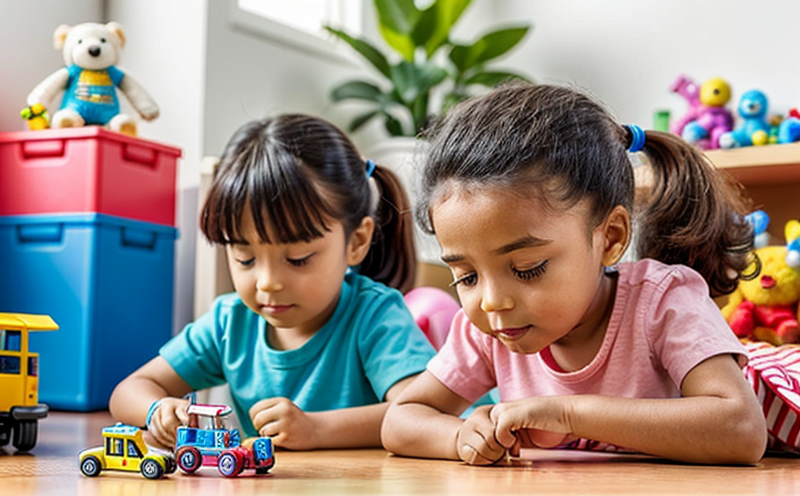Ensuring that environmental aging tests do not affect the safety of toys, particularly those with small parts
Ensuring Environmental Aging Tests Dont Jeopardize Toy Safety A Crucial Service for Businesses
As a parent, theres nothing more worrying than thinking about the potential harm your child might face from a toy that seems innocent enough. Unfortunately, small parts on toys have been responsible for numerous choking hazards and injuries in children. In an effort to mitigate these risks, regulatory bodies such as the U.S. Consumer Product Safety Commission (CPSC) have implemented strict guidelines to ensure that toys are designed with safety in mind.
To achieve this goal, manufacturers must subject their products to environmental aging tests. These tests simulate various environmental conditions that a toy might be exposed to during its lifespan, including extreme temperatures, humidity, and exposure to light. By doing so, they can assess the durability of the toys small parts and identify potential weaknesses.
However, its essential for businesses to understand that not all environmental aging tests are created equal. To ensure that these tests do not compromise the safety of toys, particularly those with small parts, Eurolab offers a laboratory service designed specifically for this purpose.
Why Environmental Aging Tests Matter
Incorporating environmental aging tests into your product development process can provide numerous benefits to your business. Here are just a few
Enhanced Product Safety By simulating real-world conditions, you can identify potential hazards associated with small parts and take corrective action before the product reaches consumers.
Compliance with Regulatory Requirements Meeting industry standards such as EN 71 and CPSIA is crucial to avoid costly recalls and reputational damage. Our testing services help ensure that your products comply with these regulations.
Improved Product Reliability Understanding how your toys will perform under various environmental conditions enables you to design more robust and durable products, reducing the likelihood of customer complaints and returns.
Reduced Warranty Claims and Liability By anticipating potential issues, you can implement preventative measures, resulting in lower warranty claims and liability costs.
Key Benefits of Using Eurolabs Environmental Aging Tests
Our laboratory service offers a comprehensive range of benefits to businesses like yours. Here are some of the advantages of using our testing services
Customized Testing Protocols We work closely with you to develop tailored testing protocols that meet your specific needs and product requirements.
State-of-the-Art Facilities Our well-equipped laboratory features cutting-edge equipment, ensuring that we can conduct accurate and reliable tests.
Expert Analysis and Reporting Our team of experienced analysts provides detailed reports on test results, highlighting areas for improvement and suggesting potential solutions.
Fast Turnaround Times We understand the importance of meeting deadlines. Our dedicated team works efficiently to ensure timely delivery of test results.
QA Frequently Asked Questions About Environmental Aging Tests
Here are some common questions that businesses often ask us
What types of toys require environmental aging tests?
All toys with small parts, including those made from various materials (e.g., plastic, wood, fabric), should be tested.
How do I prepare my products for testing?
Simply send us your products or mock-ups, and our team will take care of the rest.
What information can I expect in the test report?
We provide detailed reports highlighting areas of concern and suggesting potential improvements to product design or manufacturing processes.
At Eurolab, we understand the importance of environmental aging tests in ensuring toy safety. By partnering with us, you can rest assured that your products meet regulatory requirements and are designed with the well-being of children in mind.
-
Simulating the effects of environmental exposure on toys to test their long-term durability
-
Testing the resistance of toys to temperature changes, sunlight, and humidity to ensure they remain safe
-
Verifying that toys do not degrade or weaken over time when exposed to real-world environmental conditions
-
Simulating exposure to outdoor elements, such as UV rays, rain, and wind, to test toy resilience
-
Ensuring that materials used in toys do not deteriorate or lose integrity when exposed to various weather conditions
-
Testing the impact of extended storage on toys to ensure they retain their functionality and appearance
-
Verifying that toys can endure prolonged exposure to temperature extremes without becoming brittle or warped
-
Ensuring that toys do not fade, crack, or break down when exposed to repeated cycles of moisture or dryness
-
Testing toys designed for outdoor use to ensure they withstand environmental aging and continue to function
-
Simulating the passage of time to determine whether toys lose their safety or playability after long-term use
-
Ensuring that toys made from synthetic materials do not break down under the effects of UV radiation
-
Testing the resistance of toys to mold or mildew growth when exposed to high humidity or damp environments
-
Evaluating the durability of toy packaging under long-term exposure to environmental conditions
-
Ensuring that toys do not emit toxic substances or fumes after being exposed to prolonged environmental factors
-
Simulating years of wear and tear to test the effect of environmental aging on the toy’s appearance and safety
-
Testing for signs of environmental degradation in toys used for outdoor activities, such as play structures or ride-ons
-
Ensuring that toys designed for children are resistant to material degradation from environmental stressors
-
Simulating extreme weather conditions, like snow, rain, or heat, to evaluate how toys handle adverse environments
-
Testing whether toys made of natural materials like wood or cotton resist environmental degradation
-
Verifying that toys retain their usability and safety features after extended exposure to fluctuating environmental conditions
-
Simulating the impact of dust, dirt, and grime on toys to ensure they maintain their functionality and safety
-
Verifying that all materials used in toys can withstand environmental exposure without harming the child or product




